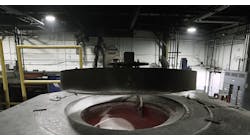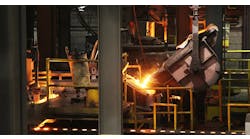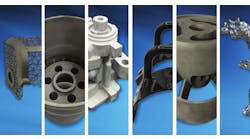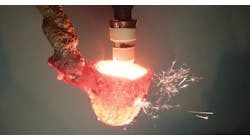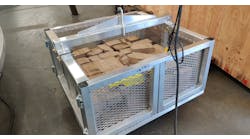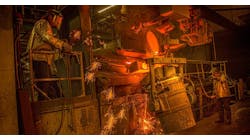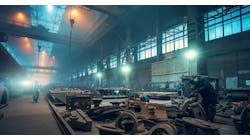Top Investment Castings of 2024
Automotive Aftermarket Foundry Books SinterCast
Could Cold Plasma Change HPDC?
Smith Foundry Chooses to Shut Down
Have you ever wondered what is meant by “high-tech materials”? In many cases these are metals like titanium, niobium, and tantalum alloys, among others, that are exceptionally resistant to heat and wear, making them valuable for heat exchangers and other electronic and chemical industry applications. But those characteristics make it challenging to find an efficient way to melt and refine such metals. As explained by ALD Vacuum Technologies, refractory metals’ high melting points and chemical reactivity exclude most industrial melting technologies.
The exception is electron beam melting (EBM), which meets the higher temperature requirements and provides inert melting conditions. Still, EBM furnace designs and processes need to be adapted to refractory metals’ purity and production-cost requirements.
ALD’s Jochen Flinspach explained that metals like niobium and tantalum, among others, have very high melting points – over 3,000 °C – and therefore require correspondingly high melting temperatures, which many conventional induction furnaces and refractory crucibles cannot provide.
Flinspach, who is the operations manager for EBM service at ALD, added: “Reaction of the melt pool with the crucible made of refractory material like zirconium oxide can lead to inclusions of foreign particles in the melt, which can have problematic consequences for subsequent processing, like worse conductive properties or lower resistance of the fabricated parts.”
Furthermore, refractory metals are reactive in a higher temperature range, i.e. above liquidus temperature. Therefore, even minimal oxygen input undermines material quality, and melting under vacuum or inert gas conditions is required. Also, with conventional melting methods, the gas value inside the melting chamber may be too high, causing the material to become brittle.
Electron beam melting also offers flexible power distribution and high vacuum conditions that support refractory metal refining. Typically, one or multiple electron beam guns are connected to the melt chamber, depending on required power level and melt surface area to be scanned.
ALD Vacuum Technologies offers in-house process expertise, furnace design, and EB gun technology that addresses the requirements of refractory metal production. The gun control is fully integrated in its furnace control concept, so interactions between individual furnace functions and implementation of process-related logic are ensured.
Modern melting furnaces offer semi-automated operation where human interaction is necessary for corrective functions – which contributes to high process reproducibility and reliable furnace operation.
“EB melting has been established as a variable process capable of producing material with highest purity and gas contents lower than 10 ppm,” Flinspach added. “It is also suitable for mass production of reactive metals or alloys required for aerospace or chemical applications.”
ALD offers EBM technologies for a range of plant configurations, for customers’ specific material feed or process requirements. “The heart of every system is our electron beam gun, a high-performance heat source that can reach temperatures above the melting or even vaporization point of all materials at the beam’s point of impact,” Flinspach detailed. Magnetic deflection and fast, high-frequency scanning processes allow the electron beam to be precisely directed to work areas of different shapes while maintaining a strong and uniform power distribution.
The gun and its operation are customizable, so operators can adjust parameters like the shape of the beam pattern or its positioning, avoiding shadow effects that could negatively impact material quality. In addition, the plant runs in vacuum conditions typically below 10-4 mbar, even down to 10-6 mbar.
For maximum beam efficiency, ALD offers an automated beam control system (Ecosys) to optimize energy distribution. The furnace functions are largely automated, with operators involved mainly for corrective actions. Process visualization provides relevant data clearly arranged on a screen, while details can be called up on corresponding pages if required.
Besides designing EBM installations, ALD operates two EBM furnaces at its German headquarters as a service to customers who do not have sufficient processing capacity for refractory metals. “Our 60 kW EB plant is suitable for ingots up to 100 mm in diameter and 500 mm in length. It is used for smaller material quantities or laboratory and research applications, as well as precious metals melting,” explained Ulrich Biebricher, remelting and melting specialist. “Our 600-kW plant was designed for ingots starting at 42 mm up to 300 mm in diameter and 2,000 mm in length.”
ALD is available to refine high-purity metals for electronics manufacturing, prepare refractory or reactive metals for chemical use, or to process return materials from a wide range of applications.
